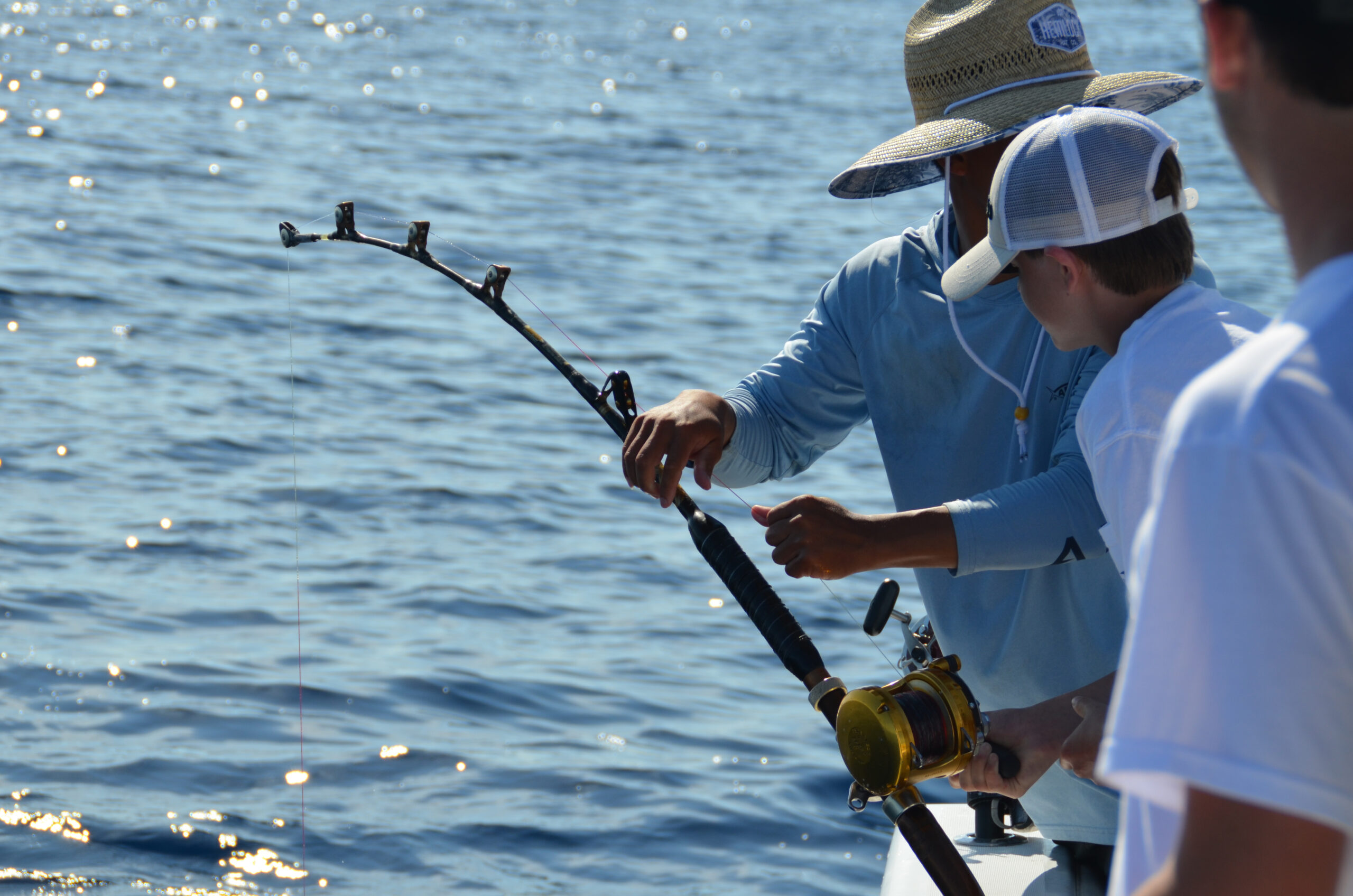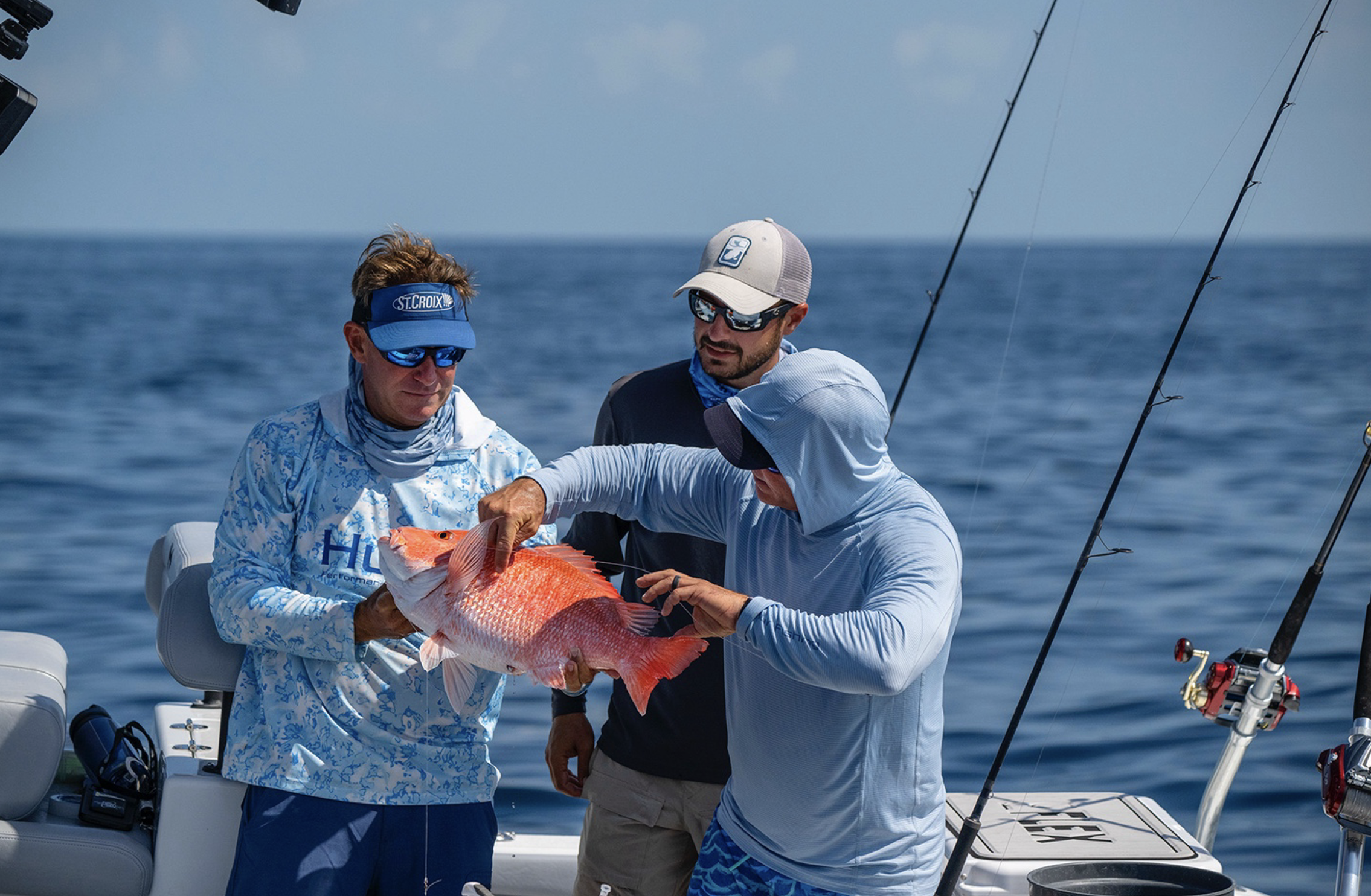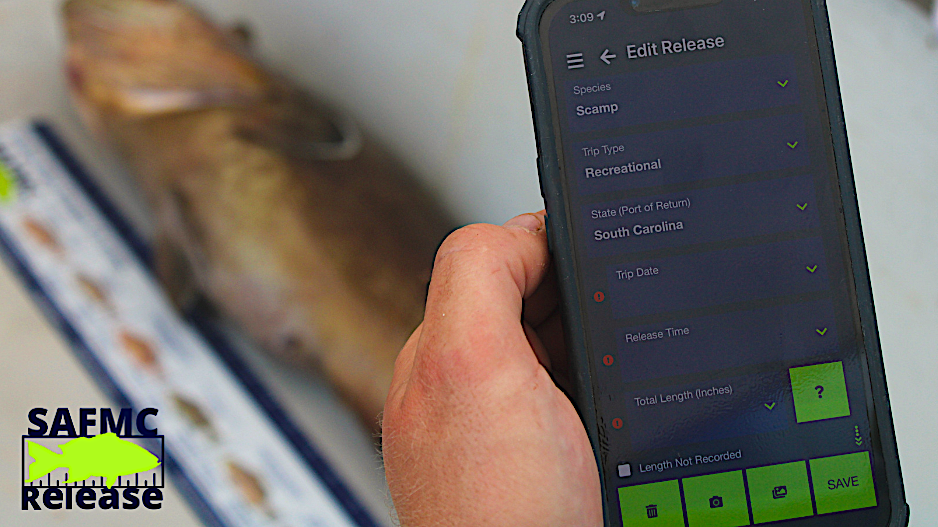What can South Atlantic reef fish anglers learn from their Australian counterparts?

Australian researchers surveyed deepwater, reef fish anglers about strategies employed to minimize post-release mortality.
Research Need
When fish die during or after their release, this “post-release mortality” poses a major challenge for global recreational fisheries.
Despite anglers’ best intentions, some released fish will die due to several factors, including improper handling of the fish, extended time out of the water, damage from fishhooks, and higher level predators (such as sharks). In addition, species caught in deepwater also are at risk for pressure-induced barotrauma.
Why should anglers be concerned about fish deaths after release? With more post-release mortality comes increased pressure on fisheries and repercussions like shortened or closed seasons. Combine high levels of fish releases with even modest levels of mortality to a population of fish already at a low level, and you’ve got a real management challenge.
Need a local example? NOAA Fisheries recently announced the South Atlantic red snapper recreational season will only be a single day this year (July 12, 2024). According to the announcement, “The most recent stock assessment concluded that the population of South Atlantic red snapper is recovering, but remains overfished, and that too many red snapper are being caught and discarded dead.”
While there is no way to completely eliminate post-release mortality from recreational fishing, most agree the best approach is to ensure that anglers are aware of practices that promote fish survival.
But if anglers know about sustainable fishing techniques, will they regularly apply them?
What did they study?
In 2022, researchers surveyed 503 boat-based recreational fishers on Australia’s Demersal Scalefish Fishery to determine whether anglers used six common release strategies to minimize post-release mortality: descending devices, venting, circle hooks, slow retrieval, minimizing time fish are out of the water, and best fish handling practices.
While not all of these techniques are known to enhance survival, researchers know that most anglers will at least be aware of one or more.
This Australian fishery is like the Snapper Grouper species complex on the U.S. East Coast, which the South Atlantic Fishery Management Council manages. In both cases, the species are slow-growing and deep-dwelling, and post-release mortality is a key sustainability issue.
What did they find?
A high percentage of fishers (82%) employed at least one of the six practices to minimize post-release mortality, but awareness of a particular practice did not always predict adoption.
For example, 94% of fishers surveyed were aware of descending devices, but only 32% reported using them. Conversely, 41% of fishers were aware of best fish handling practices, while 84% reporting using them.
Key specifics that influenced whether anglers adopted best fishing practices included perceived effectiveness, ease of use, age of the fisher, and the geographical region.
Anything Else?
The scientists suggest that the perceived lack of effectiveness for descending devices may be because fishers cannot observe the fish in the act of being released at depth.
We have all seen the videos, but anglers may wonder about they fish they released. Without video confirmation or consistent practice, fishers might never feel confident that the descending device worked correctly.
Overcoming this challenge, though, may lead to greater adoption and use of descending devices.
So What?
Closer to home, the South Atlantic Fishery Management Council is actively promoting Best Fishing Practices for red snapper and other species within the Snapper Grouper fishery. By all accounts, the educational effort is gaining momentum, as more anglers become aware of post-release mortality. Hopefully, they’ll adopt fishing practices to minimize it.
Reading
Liv Rynvis, Sam Bock, Matt Gillett, Shane Walters, David V. Fairclough, and Matt Navarro. Recreational fishers’ awareness and adoption of strategies to minimize post-release mortality in demersal fish. Fisheries Research. 276 (2024). https://doi.org/10.1016/j.fishres.2024.107056
lead photo credit: Return em Right.
BY SCOTT BAKER
The text from Hook, Line & Science is available to reprint and republish at no cost, but only in its entirety and with this attribution: Hook, Line & Science, courtesy of Scott Baker and Sara Mirabilio, North Carolina Sea Grant.
- Categories:



